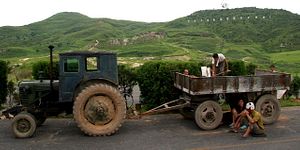With little progress made on the denuclearization of North Korea since the failed Agreed Framework two decades ago, Washington’s approach to Pyongyang is largely defined by the number of sanctions imposed on the country and, in particular, its leaders. However, according to a Daily NK interview with Dr. John Park, an expert on North Korean state trading entities, the current sanctions against Pyongyang have been of questionable effectiveness. Likening sanctions to antibiotics, Park said the regime may be developing immunity to sanctions because they have been over-prescribed.
This is not to suggest that sanctions are bound to fail. Rather, Park encourages policymakers to study the nuances of each target and assess the secondary effects of the measures. There is definitely room for further research to “preserve the effectiveness of sanctions overall.”
In the meantime, other factors beside sanctions are plaguing the North Korean regime. Indeed, there are at least three major challenges plaguing the North Korean government that have largely been ignored by the international community:
First, bad weather. Although long-term structural problems ultimately caused the catastrophic collapse of North Korea’s agricultural system in the 1990s, drought and flooding have been cited as the immediate catalysts for the famine. Indeed, the country is still reeling from the consequences of these climate-related disasters.
Cognizant of the dangers of extreme weather events, Pyongyang has been surprisingly compliant on international climate change conventions. Of course this is made easier by the country’s fuel deficit and industrial degradation; nonetheless, it is likely that North Korea does take the impact of global warming quite seriously (as does the U.S. military).
North Korea’s attempts to mobilize citizens to build public works that mitigate flood damage or stop farmers from encroaching into forests to prevent soil erosion have been largely unsuccessful. Indeed, these policies create significant levels of discontent in local communities, creating another serious problem for the state.
Another factor ailing North Korea are regional economic panics. North Korea is surprisingly susceptible to market volatility in the Asia-Pacific, especially in the agricultural sector. This was made apparent by the rice panic that started in Southeast Asia in the first half of 2008, which caused food prices to skyrocket throughout North Korea. This was especially true in peripheral urban centers like Cheongjin, Hamheung, and Wonsan, where rice and corn prices doubled. Even residents in Pyongyang– which the regime usually tried to insulate from the problems facing the country– faced a 73 percent increase in food prices. Meanwhile, rumors of further food price increases led to hoarding and shortages.
Like most of the region, North Korea’s food market calmed down in June of that year after Japan announced it would export its surplus rice reserve to the Philippines, instantly stabilizing prices in Vietnam and India. As this case clearly showed, however, as a net importer of food and fuel, North Korea is more closely integrated into the regional market than is often recognized.
Finally, self inflicted wounds constantly plague the North Korean regime. Even in the above mentioned case of the regional rice panic, the contagion was exacerbated in North Korea by the government’s 2005 ban on private grain trading and the reimposition of the public distribution system. This, according to Marcus Noland and Stephan Haggard of the Peterson Institute, left the North Korean people even more vulnerable to shocks from abroad.
At the end of the day, Pyongyang’s mismanagement and lack of accountability have consistently acted as the state’s greatest challenge. Another recent example of this was the failed currency reform initiative in 2009, when the state’s poorly-introduced new currency led to explosive inflation and market volatility. As a result, the North Korean public prefer foreign currencies over their country’s own sovereign tender, making it increasingly difficult for the state to control the domestic economy.
Another example of North Korea’s self-defeating policies was the shelling of South Korea’s Yeonpyeong Island in November 2010, which raised such alarm among North Korean citizens that it caused another market panic. Rice prices in Pyongyang nearly doubled between October 2010 and January 2011, while the exchange rate of the Korean People’s Won (KPW) collapsed from 1,350 KPW/USD to 3,100.
This is not to suggest that any of these factors hindered North Korea’s nuclear weapons program. However, the inability of the state to properly deal with these challenges reveals critical vulnerabilities and weaknesses. This is something analysts should keep in mind as new policies are developed to deter Pyongyang’s provocative behavior.

































